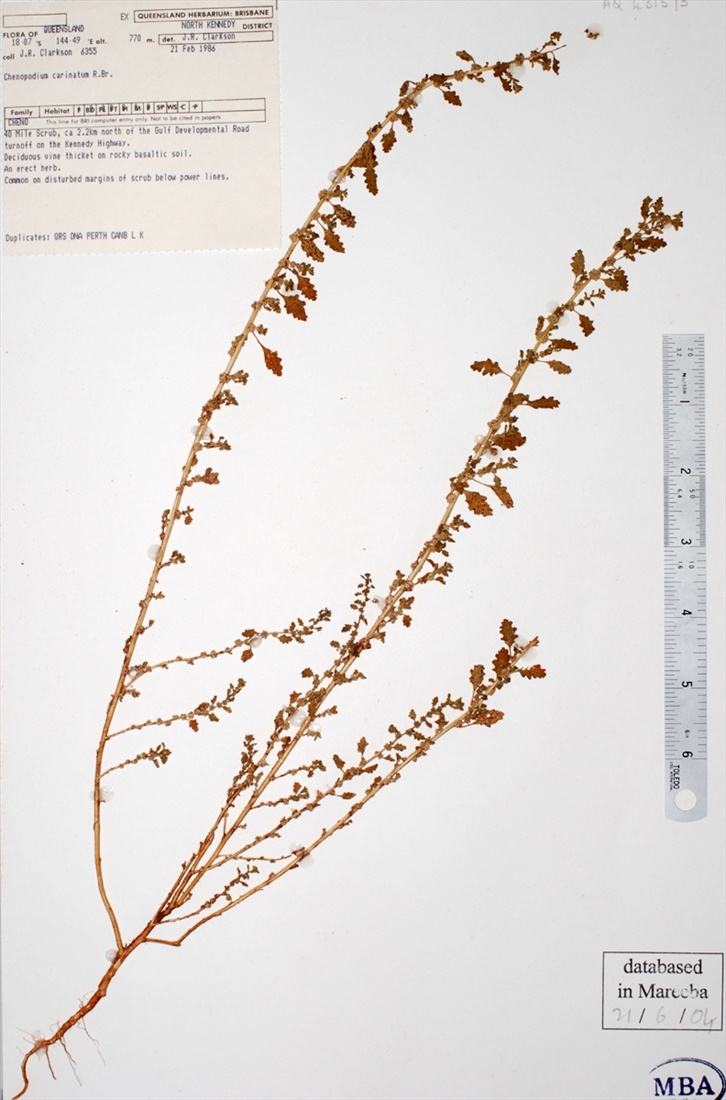Australian Tropical Rainforest Plants - Online edition
Dysphania carinata (R.Br.) Mosyakin & Clemants
Mosyakin, S.L. & Clemants, S.E. (2002), Ukrainian Botanical Journal 59(4): 382.
Green Crumbweed; Keeled Goosefoot
Leaves in outline ovate to elliptic, rarely narrow-elliptic, small, mostly 0.3-3 × 0.25-2 cm., sometimes as wide as long, with 2-4 (6) usually coarse sometimes obscure entire or denticulate teeth or lobes on each margin, rarely entire or almost so; glands between veins on inferior side of leaves sessile to subsessile, not accompanied by hairs unless on veins.
Seeds all vertical (laterally compressed), deep red-brown, shining, 0.5-0.75 mm. in diam., bluntly or sharply keeled; testa (seen under microscope) almost smooth.
Features not available.
Becomes a weed of cultivation. Suspected of poisoning stock (Webb 1948).
Chenopodium carinatum R.Br., Prodromus Florae Novae Hollandiae : 407 (1810), Type: (J.) v.v. [given by P.G.Wilson, Nuytsia 4 (1983) 173 as Hawkesbury R., New South Wales, R. Brown (holo: BM).].







